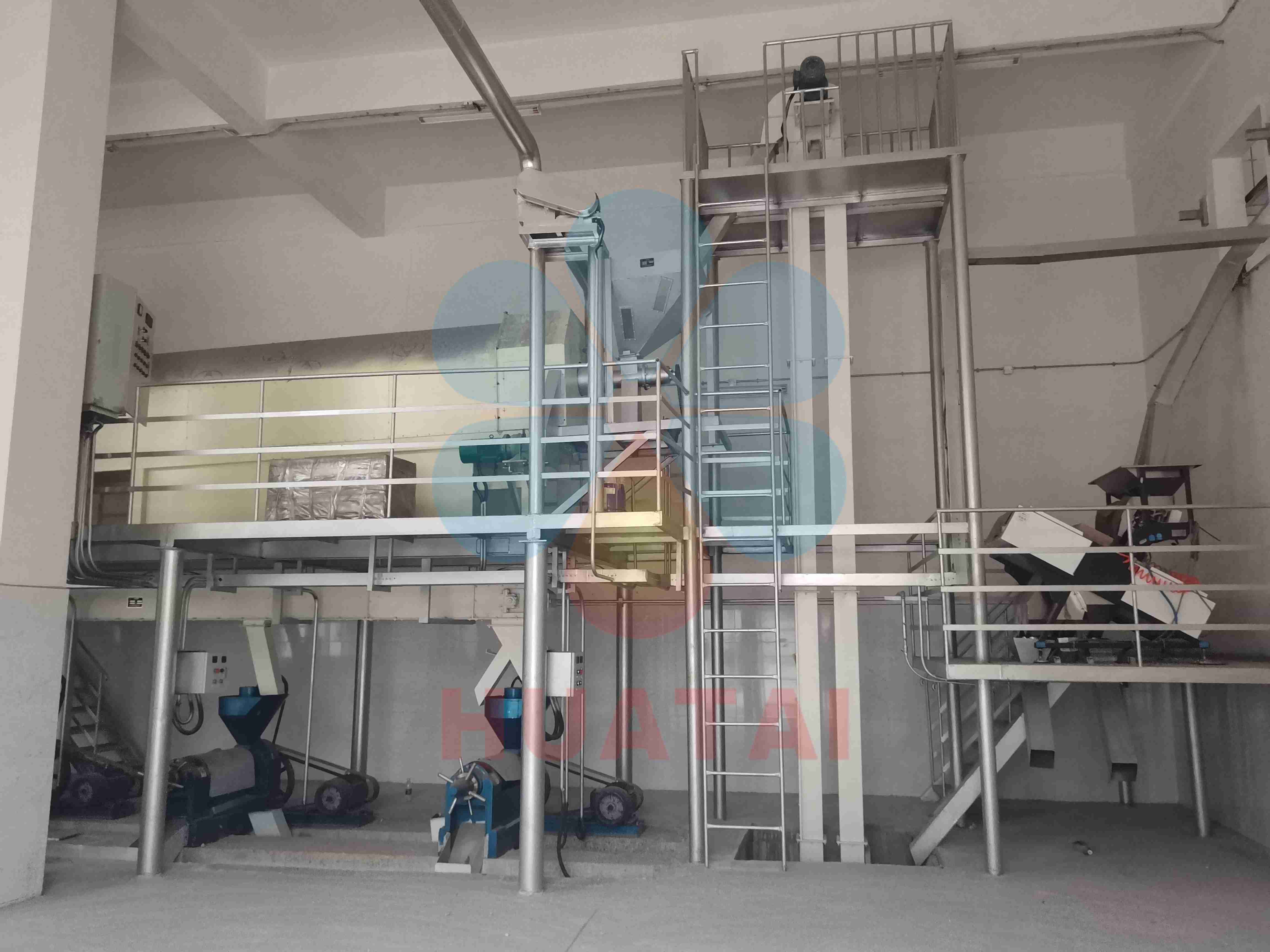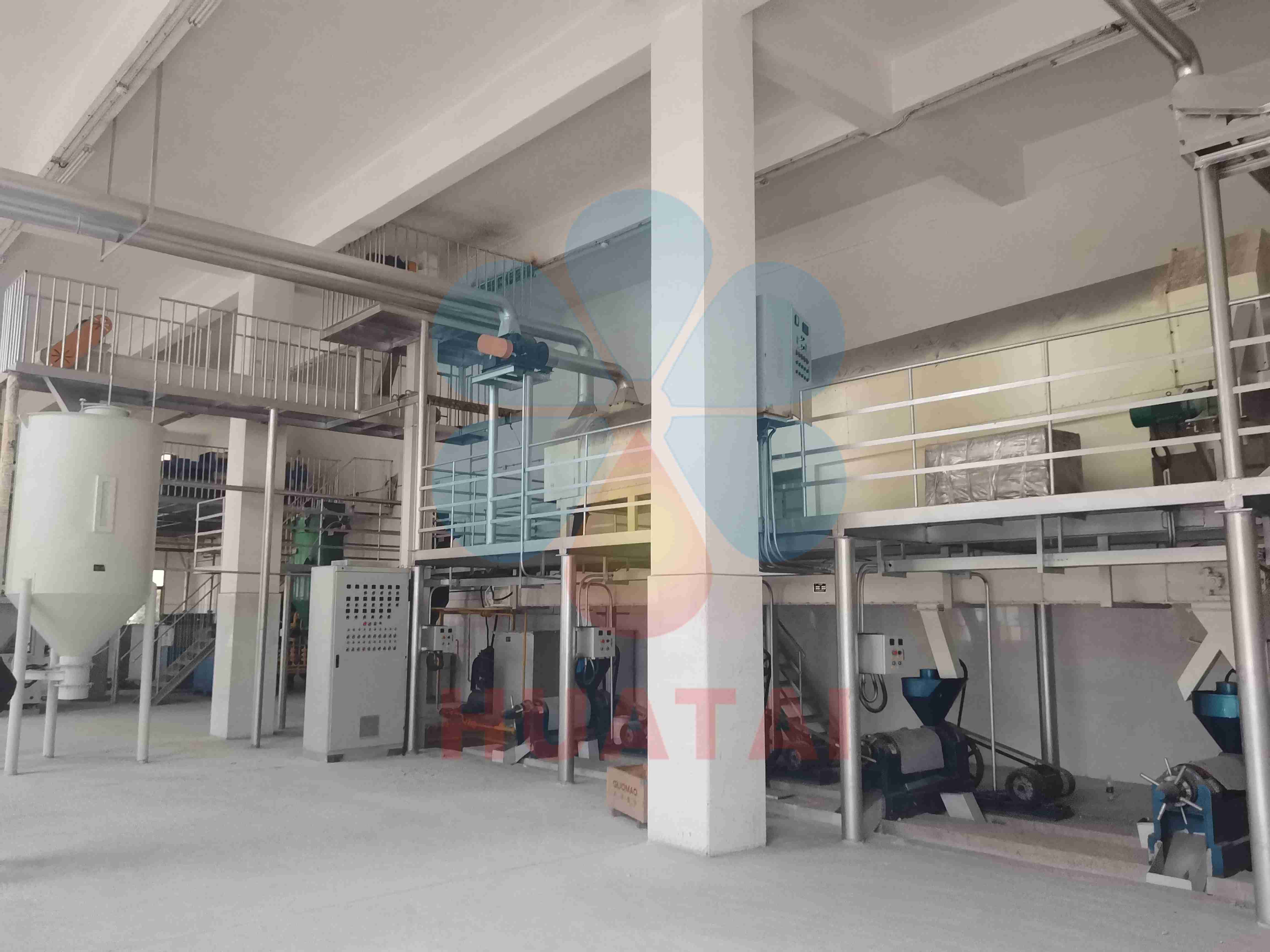Peanut oil is light yellow, transparent, bright in color, fragrant in smell, and delicious in taste. It is an edible oil that is relatively easy to digest. Peanut oil contains more than 80% unsaturated fatty acids (including 41.2% oleic acid and 37.6% linoleic acid). Additionally, it contains 19.9% saturated fatty acids such as palmitic acid, stearic acid, and arachidic acid.
Peanuts undergo raw material crushing, selection (separating peanut kernels from shells), cooking until 60-80% cooked, and then physical pressing using an oil press. The final products are pressed peanut oil and peanut residue. Pressed peanut oil retains its full color, aroma, and taste while preserving various nutrients.
Since machine-pressed peanut oil adopts a purely physical pressing method, it preserves the natural essence of peanuts, making raw material requirements very strict. The peanuts must be fresh, with low acid value and peroxide value, which results in a relatively higher price. Meanwhile, due to the pressing process, the residual oil content in peanut cake is high, and the oil yield is relatively low.

Peanuts → Cleaning and impurity removal → Shelling → Crushing → Cooking → Pressing → Crude oil → Refining → Finished oil → Feed-grade peanut cake
Most impurities mixed in oilseeds absorb a certain amount of oil during processing and remain in the peanut cake, causing oil loss and lowering the oil yield. If peanut kernels contain sand, metal, hemp rope, and other debris, they can cause equipment wear, leading to production accidents and affecting processing efficiency. Therefore, removing impurities is essential to ensure smooth production. Common methods include screening, air selection, and magnetic separation.
The peanut shells contain very little oil, and during processing, they not only fail to produce oil but also absorb oil, reducing the yield. Shelling before oil extraction helps minimize oil loss and improve oil yield.
Various crushing machines are used, including roller crushers and hammer crushers. Some processes also use disc shellers for crushing.
Heat treatment is an essential step in oil extraction. It involves moisturizing and heating raw materials, known in production as cooking. After cooking, the material becomes cooked. Heat-treated raw materials that undergo pressing are called "hot-pressed," while those that skip heat treatment are called "cold-pressed." Peanuts are mainly hot-pressed, and the effectiveness of cooking directly affects the smooth progress of the oil extraction process, oil yield, and the quality of oil and peanut cake.

Peanut oil presses produced by Huatai Oil Machinery have a simple structure, high pressure, and can continuously process materials with low labor intensity while pressing various oilseeds. Additionally, these machines are equipped with automatic temperature control devices, which effectively reduce labor intensity, wear, and maintenance efforts, ensuring optimal performance.
During the pressing process, peanut oil may be contaminated with various impurities and harmful substances, such as aflatoxins and free fatty acids, which can affect its quality and stability. Therefore, to provide safer and healthier peanut oil, we need to purify the oil and enhance its quality through refining techniques.
Huatai Oil Machinery provides good quality oil mill plant, time & fast delivery, perfect after-sale services, and reasonable price, contact us!
Website: https://www.huataioilmachine.com/Copyright @ Henan Huatai Cereals And Oils Machinery Co.,Ltd.
Contact us now